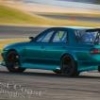Diagnosis Rb: Wha'ts The %#^$Ing Problem?
Announcements
-
Similar Content
-
Latest Posts
-
That is porn and I wish I could do it easily on my streeter.
-
Yes there is a front and back insertion point on each side, each point is tubed with supports into the car and tied to the cage/ floor mount point
-
Is the jack stand system tied into the cage somehow? Upgrades look goooood 😍
-
By TurboTapin · Posted
Touché. I had not noticed it was an NA.
-







Recommended Posts
Create an account or sign in to comment
You need to be a member in order to leave a comment
Create an account
Sign up for a new account in our community. It's easy!
Register a new accountSign in
Already have an account? Sign in here.
Sign In Now